Iranian Food Dishes: Basic Overview
Common Ingredients
Common Cooking Methods
Courses
Meals
Key Taste
Eating Etiquette
Meal Presentation
Culinary Festivals
Influence and Fusion
Popular Types of Iranian Dishes
-
Rice Dishes
Rice dishes are a staple in traditional Iranian cuisine and come in many different varieties.
These dishes are made with fragrant rice, herbs, fruits, and meat or poultry.
The northern region of Iran, particularly Mazandaran and Gilan provinces, produces some of the best rice varieties in the country.
-
Stews
Iranians relish a range of stews made with meat and vegetables.
These stews are usually savory, but they can have extra flavors, such as sweetness and sourness, depending on the additional ingredients.
Herbs, spices, and even fruits are commonly used to enhance the flavors of Iranian stews.
-
Desserts
Iranian cuisine boasts a rich array of desserts, from pastries to ice creams and traditional sweets.
Iranian desserts are usually sweet, creamy, and fragrant, featuring fruits, nuts, dairy products, and spices.
Many desserts are also served as snacks in Iran.
Iranian holidays and celebrations usually come with beautifully decorated desserts.
-
Bread and Doughs
There are many types of bread in Iran, especially flatbread and leavened bread.
Iranians enjoy bread as a traditional side dish for many types of dishes.
These bread varieties can have a neutral taste or be flavored with spices and dairy products.
Iranian dishes are delicacies encompassing the culinary tradition of Iran, which was historically known as Persia. Although the Persians are only one of the ethnic groups in Iran, their cooking substantially influences the country’s history.
The cuisine of Iran has been influenced by and made extensive contact with many neighboring countries in West Asia. Its dishes also adopt traits of Caucasian, Central Asian, Mesopotamian, and Turkish cuisines.
Many Iranian dishes use rice as the main staple to combine with meat, vegetables, and nuts. Plus, herbs and fruits are used to diversify Iranian delights.
More information about traditional Iranian food will be revealed next, including its main characteristics, global relevance, and healthy aspects. Next, I will look into the most amazing 36 dishes Iran has to offer.
My entries on these Iranian dishes will cover the ingredients and accompaniments of these food offerings. Plus, you get the chance to explore how the locals enjoy these specialties.
I suggest sticking around to find out all the reasons that make Iranian dishes popular. Then, uncover more about the recommended beverages for pairing with dishes and must-know etiquette rules in Iran.
36 Most Popular Iranian Dishes with Filters
Keep scrolling to explore the most well-known 36 dishes hailing from the thousand-year-old Iranian cuisine. Explore these dishes with my advanced filters for alphabetical sorting, main ingredients, taste, cooking methods, dish types, and courses.
My interactive filter also helps you to discover everything from cherished traditional meals and national favorites to popular specialties and street eats.
Kabab Koobideh
- National
- Street Food
- Traditional
Kabab koobideh is a famous variety of Iranian kebab (skewered and grilled meat). It is widely available in the country, from available fancy restaurants and nightclubs to snack carts and street stalls.
This delicious Iranian meat dish is prepared with ground lamb or beef (about 20% fat and 80% meat) and chopped onions. The meat is minced twice and smashed with a wooden mallet before being grilled on a seekh (skewer) over hot coals.
Kabab koobideh goes well with vegetables, herbs, and steamed chelow (white, fluffy rice). Chelow kabab is a famous food combo in Iran.
Fesenjān
- National
- Traditional
Fesenjān is a traditional sweet and sour Iranian stew typically served over rice. It is known for its rich flavors of pomegranate paste and ground walnuts.
Various types of meat can go into fesenjān, such as poultry, lamb, or meatballs. Fragrant spices are also a critical ingredient.
Originating in northern Iran, this ancient stew boasts many regional variations and is often reserved for special occasions, like weddings, winter solstice, Yaldā Night, or Jewish Rosh Hashanah celebrations.
In the traditional Iranian system of garm (hot) and sard (cold) foods, fesenjān is considered a “hot” dish. Therefore, locals often pair this stew with “cold” items like coriander or yogurt.
Aush Reshteh
- Street Food
- Traditional
Aush reshteh is a traditional soup in Iranian cuisine. “Aush” refers to a type of thick soup, while “reshteh” means “noodles” in Persian, especially egg noodles shaped like ribbons.
Although there are dozens of types of aush in Iran, aush reshteh is the most popular one. Its main ingredients are noodles, kashk (a fermented dairy product), herbs, beans, lentils, onions, and garlic.
Aush reshteh traces its origins to the 6th century when noodles were incorporated into its recipe. Typically prepared and relished during the colder months of autumn and winter, aush reshteh is also a favorite in celebrations like Nowruz.
Mirza Ghasemi
- Traditional
Mirza ghasemi is a traditional Iranian dish originating from the northern regions near the Caspian Sea. It is primarily based on grilled eggplants and seasoned with garlic, tomatoes, and oil or butter. These ingredients are bound together by eggs.
Iranians prepare mirza ghasemi either as a casserole or a dip to accompany bread and rice. Kadoo ghasemi is an interesting variant that uses zucchini in place of eggplant.
Sabzi Polo
- Traditional
Sabzi polo is a classic rice dish in Iranian cuisine that traditionally comes with chopped herbs and fish.
Sabzi (Persian for “green”) refers to herbs or vegetables, whereas polo is cooked rice. Coriander, dill, parsley, and fenugreek are some of the herbs commonly used in sabzi polo.
During Nowruz, people typically eat sabzi polo with māhi sefid (white fish) for lunch with their families and relatives. Other popular side dishes are pickled garlic, herbs, and vegetables.
Baghali Polo
- Traditional
Baghali polo, or baghalaa polow, is an Iranian rice dish made with fava beans, and dill. In Persian, “polo” signifies pilaf, a rice preparation style and dish popular in many countries.
Making baghali polo involves cooking rice and green broad beans in hot water, then layering them with dill in a pan for baking.
For an added depth of flavor and a vibrant hue, saffron water is incorporated into this Iranian rice dish. Baghali polo goes well with meats like lamb, chicken, or fish and is often served on special occasions.
Dolma
- Traditional
Dolma is a traditional family of stuffed dishes prevalent in Iran. It comes in multiple versions, with popular ones being stuffed vine leaves, cabbage leaves, eggplants, quinces, and apples.
Each dolma variant has its unique filling and seasoning, with rice, meat or seafood, and vegetables as common ingredients. People reserve dolma for special occasions like weddings, winter solstice, or Yaldā Night.
To balance their rich flavors, dolmas are usually paired with “cold” accompaniments such as yogurt or sour cherries.
Abgoosht
- National
- Traditional
Abgoosht, or dizi, is a traditional stew in Iran that contains lamb, chickpeas, turmeric, potatoes, and beans like black-eyed peas and kidney beans.
A rustic specialty, abgoosht is made with cheap, bony cuts of lamb. People serve it with warm flatbread, fresh herbs, pickles, or any palate cleanser that counteracts the stew’s richness.
To serve abgoosht, Iranians remove the lamb and vegetables from the broth and serve the savory broth first. The meat and vegetables will then be mashed or kept whole and served afterward.
Gheimeh
- Traditional
Gheimeh is a traditional stew in Iran made with diced mutton or beef, split peas, and dried lime. It pairs perfectly with white rice, fried eggplant, or fried potato slices.
This tasty stew is the main part of many Iranian meals, especially when it is served hot. Many people like to add a dash of saffron to give gheimeh a distinct flavor.
Tahchin
- Traditional
Tahchin is a traditional Iranian rice cake made mainly of rice, saffron, yogurt, and eggs. Some variants also include vegetables and meat, such as chicken filets, fish, or beef.
The most delicious part of tahchin is the thin, crispy layer of tahdig (scorched rice) at the bottom of the pot. Interestingly, Iranian restaurants often leave out the non-crispy rice portion while serving tahchin.
Khoresh
- Traditional
Khoresh, or khoresht, is a wide range of stews commonly accompanied by rice in Iran. Its main ingredients range from meats and vegetables to fruits, nuts, and beans. Saffron is a sought-after spice for seasoning this type of stew.
While many khoresh versions contain meat, vegetarian alternatives are also prevalent. The dish boasts numerous regional variations, with gheimeh, ghormeh sabzi, and fesenjān being among the most cherished.
Lavash
- Traditional
Lavash is a thin, unleavened Iranian flatbread that hails from Armenia. It is traditionally baked in a clay oven called tandoor (tonir).
Regular lavash is a simple combination of flour, water, and yeast, and it becomes dry quickly and has a hard and brittle texture. Locals enjoy it by soaking it in butter, water, or cheese to use as a meal.
Iranians opt for soft lavash to prepare wrap sandwiches with filling like kebab.
Taftan
- Traditional
Taftan, or taftoon, is a type of leavened bread in Iran featuring refined flour, milk, eggs, and yogurt. It is one of the most popular bread varieties cooked in a clay oven.
The locals usually flavor taftan with saffron or cardamom powder and use poppy seeds as a garnish. Outside of Iran, taftan is also well-known in Kuwait and several South Asian countries.
Albaloo Polo
- Traditional
Albaloo polo is an Iranian rice dish infused with sour cherries. Offering a delightful sweet and sour taste, it pairs well with meat-based dishes and stews, such as grilled meat and khoresh.
Albaloo polo ba tahdig maast is one of the most cherished variations of this dish, featuring a crispy crust of tahdig and various aromatic herbs and spices, including advieh (a Persian spice blend).
Sangak
- Traditional
Sangak is an Iranian flatbread creation made with whole wheat flour. It usually comes in two versions: a generic version with no toppings and a more costly one garnished with poppy or sesame seeds.
The first mention of sangak bread dates back to the 11th century when flatbread was made for the Persian army. Each soldier carried some tiny stones and combined them to form a “sangak oven” at camp.
Barbari Bread
- Traditional
Barbari bread is an Iranian yeast-leavened bread boasting a thick profile. It sports a pretzel-like skin and is typically adorned with sesame or black caraway seeds on top.
According to popular theories, Barbari bread originated in Khorasan, Iran, as a creation of the Hazaras, an ethnic group. This flatbread gained popularity in Tehran during the Qajar dynasty and became a favorite among the Iranian Azerbaijanis.
Usually coming in long and wide shapes, Barbari bread is baked with a glaze made from baking soda, flour, and water. This type of bread pairs perfectly with Lighvan cheese, a delicacy crafted from ewe’s milk.
Sheermal
- Street Food
- Traditional
Sheermal, or shirmal, is a saffron-flavored flatbread in Iran. The literal translation of its name is “rubbed milk,” with “sheer” and “mal” meaning “milk” and “to rub,” respectively.
In Iran, each region has its own way of preparing sheermal. People historically prepared it like the Indian roti, though modern sheermal is made like naan, with the addition of milk and seasonings like saffron and cardamom.
Sometimes, sheermal contains dried fruit in the dough for added sweetness. This fragrant and golden flatbread is often sold as a souvenir in Iran at street-side food stalls.
Shirin Polo
- Traditional
Shirin polo is an Iranian rendition of pilaf and is traditionally served at weddings. Therefore, people sometimes refer to it as “Persian wedding rice” or “jeweled rice.”
Shirin polo is made by soaking and boiling before draining and steaming to mix with spices. This rice usually has different nuts and dried fruits, including apricots, barberries, and dates on top.
In the Jewish community, people also eat shirin polo during Rosh Hashanah, Pesach, and the High Holy Days.
Tahdig
- Traditional
Tahdig is a cherished Iranian delicacy featuring the crispy crust of scorched rice that forms at the bottom of the pot during cooking. People usually serve it to guests as a gesture of hospitality and respect.
This scorched rice specialty boasts a caramelized and rich flavor. There are many ways of making tahdig, especially by adding extra ingredients like potatoes, bread, yogurt, saffron, or lamb fat.
Some tahdig versions even incorporate fruits, such as sour cherries. Tahdig isn’t limited to rice; even starches like spaghetti are suitable for creating a crispy base.
Ghormeh Sabzi
- National
- Traditional
Ghormeh sabzi is a traditional Iranian herb stew. Its main ingredients are sautéed herbs, kidney beans, onions, dried limes, and either lamb or beef.
This stew dish has various adaptations based on the choice of beans and meat. Ghormeh sabzi is a popular main dish for accompanying rice or tahdig, flatbread, salads, and yogurt.
Iranians also serve ghormeh sabzi for special occasions, like weddings or winter occasions. International Ghormeh Sabzi Appreciation Day is an interesting event held annually on the last Saturday of November by Iranian expats in the US.
Baghali Ghatogh
- Traditional
Baghali ghatogh is a northern Iranian stew with fava beans, eggs, and dill. In northern provinces like Mazandaran and Gilan, it’s commonly eaten with kateh (a Persian rice dish).
Outside of Iran, people use kidney beans, lima beans, or fava beans for this delicious stew. To reduce the cooking time, locals soak the beans overnight to soften them up for the preparation process.
Zoolbia
- Traditional
Zoolbia is an Iranian sweet snack made by deep-frying batter into circular shapes and then immersing them in aromatic sugar syrup. This name came from the Arabic word “zulabiya” and probably inspired Indian jalebi.
In Iran, Zoolbia is sweet and rich and often accompanied by black tea. This snack is very popular during Ramadan when Iranians distribute zoolbia to the less fortunate.
Zoolbia is sometimes served alongside bamiyeh, a deep-fried churro-like snack.
Pashmak
- Traditional
Pashmak is a traditional Iranian candy floss or cotton candy. Often referred to as Persian cotton candy, it comes from the historic city of Yazd, a locality renowned for making age-old Persian confections.
Unlike the typical cotton candy, pashmak boasts a unique preparation method, with sugar being heated and then stretched into delicate strands. Feel free to enjoy this sweet treat on its own or with fruits, cakes, and ice creams.
A sprinkle of ground pistachio nuts is often used to enhance the flavor and aesthetic appeal of pashmak.
Nan-e Berenji
- Traditional
Nan-e berenji is an Iranian round, flat rice flour-based cookie. It is traditionally flavored with rose water or cardamom and garnished with pistachios, poppy seeds, or barberries.
Locals often serve nan-e berenji as a light afternoon snack with a hot cup of coffee or tea during Nowruz.
Every region of Iran has its version of this delightful treat. However, the ones from the Kermanshah region are the most famous kind.
Sholezard
- Traditional
Sholezard is an Iranian rice pudding dessert often called Persian saffron rice pudding. It symbolizes joy and happiness and is a staple at special occasions like weddings, religious holidays, and family gatherings.
Thanks to the use of sugar, rose water, butter, cinnamon, and cardamom, sholezard boasts a creamy texture, a captivating golden hue, and an enticing aroma. Using slivers of almonds, pistachios, or a sprinkle of cinnamon also adds to its appeal.
Halva
- Traditional
Halva is a traditional Iranian and Middle Eastern confection renowned for its rich history and diverse variations. Its main ingredients include nuts and grains, but different regions have their unique twists.
In Iran, halva is traditionally prepared during religious festivals and post-burial ceremonies. However, many Iranians now relish halva at any time, pairing it with bread, Persian tea, coffee, or even wine.
Renowned halva variations are made with sunflower seeds, semolina, cornstarch, or flour. Sesame seed-based halva is particularly famous.
Bastani
- Street Food
- Traditional
Bastani, or bastani sonnati, is an Iranian frozen treat with a distinctive yellow color. In English, it is generally known as saffron and rose water ice cream.
To make bastani, Iranians blend rose water, saffron, vanilla, and pistachios. The mixture is then frozen and enjoyed as a sweet treat to combat the intense heat.
The history of bastani dates back to around 500 BC, when people poured syrups over snow mixed with fruits, grape juice, and saffron to create a summertime treat.
Faloodeh
- Street Food
- Traditional
Faloodeh is a traditional cold dessert from Iran with a consistency similar to sorbet. Its main ingredients are vermicelli rice noodles, rose water, lime juice, and cherry syrup.
Faloodeh noodles offer a slightly chewy texture due to being made from maize, rice, or potato starch. These noodle strings are pressed to create a thin texture before being chilled and mixed in syrup.
You can visit ice cream stores and coffee shops across Iran to experience faloodeh.
Kaymak
- Traditional
Kaymak, also known as sarshir, qashta, or ashta, is a traditional Iranian dairy product. It is similar to clotted cream and is produced from the milk of water buffalo, cows, sheep, or goats.
In Iran, kaymak complements fruits, cakes, and various desserts at breakfast. This clotted cream-like treat is often adorned with ground pistachios.
With a high milk fat content of around 60%, kaymak boasts a rich taste and creamy consistency. To achieve this quality, the raw milk is slowly boiled before being skimmed and chilled for hours.
Qottab
- Traditional
Qottab is an Iranian deep-fried pastry. It is traditionally filled with crushed almonds and flavored with cinnamon, cardamom, rosewater, and orange blossom.
People prepare the exterior of qottab from soft wheat dough and shape them into a crescent pie. After frying, the pastry snack is dusted with powdered sugar.
Qottab appears at many festivals and celebrations throughout Iran, especially in the provinces of Yazd and Kerman.
Kuku
- Traditional
Kuku, or kookoo, is a traditional Iranian dish reminiscent of an open-faced omelet. This egg-based dish often incorporates vegetables, nuts, and cheese.
Cooking over low heat, grilling, and baking are a few ways of making kuku. This omelette dish is ideal for serving hot or cold with bread, yogurt, and salads.
There are many regional variations of kuku: potato kuku (kuku sibzamini), herb kuku (kuku sabzi), eggplant kuku (kuku-ye bādenjān or vereqā), and roe kuku (ašbal kuku or ašbol kuku).
Kashk Bademjan
- Traditional
Kashk bademjan is a traditional dipping blend in Iran made from kashk and eggplants. Kashk imparts a distinctive sour and salty taste to the creamy and rich flavor of the dish.
Most Iranians adorn kashk bademjan with liquid saffron, sautéed onions, garlic, and walnuts. This eggplant dipping sauce is enjoyed as a starter or a main course, pairing perfectly with fresh bread.
Torshi
- Traditional
Torshi is a traditional pickled vegetable dish in Iranian cuisine and many neighboring countries. It comprises a variety of vegetables, such as garlic, chili peppers, cauliflower, carrots, beets, cabbage, and aubergines.
To prepare torshi, these vegetables are pickled in a mixture of vinegar or brandy, salt, and diverse spices. People often serve this sour and spicy pickled dish as an appetizer, side dish, and bar snack.
Well-known torshi variations are torshi liteh (eggplant and herb torshi), tsarska turshiya (cauliflower and pepper torshi), and selska turshiya (green pepper and tomato torshi).
Kolompeh
- Traditional
Kolompeh is an Iranian pastry originating from the city of Kerman. It resembles a soft pie filled with a sweet blend of minced dates, walnuts, cardamom powder, and other spices.
Depending on individual preferences, kolompeh sometimes comes with pistachios, sesame powder, and extra nuts.
Nowadays, kolompeh stands as one of the most sought-after souvenirs from Kerman.
Poolaki
- Traditional
Poolaki is a traditional candy hailing from the Iranian province of Isfahan. It resembles a very thin coin and has a crispy texture that melts in the mouth.
Sugar, water, and white vinegar are the main ingredients of poolaki, not to mention natural flavors like saffron, dried lime, or cocoa powder. These ingredients create a delightful blend of sweet and sour goodness.
Shirazi Salad
- Traditional
Shirazi salad is an Iranian specialty named after Shiraz, a city in the country’s southern region. This Persian salad came to life thanks to the introduction of tomatoes to Iran in the 19th century.
Shirazi salad comprises cucumbers, tomatoes, onions, verjuice, dried mint, olive oil, vinegar, and various herbs. The mix of these ingredients results in a diverse texture and a refreshing flavor.
Typically served as a side dish or condiment, Shirazi salad can complement various dishes, like grilled meat, stews, or rice dishes. This traditional Iranian salad is particularly favored during the summer months in the country.
Why Are Iranian Dishes Well-known?
The popularity of Iranian dishes comes from the following four factors: historical depth, culinary influences, diverse ingredients, cultural significance, and culinary artistry.
Since ancient times, Iranian (or Persian) cuisine has been well-known for its complex flavors and artful food presentation. Iranian culinary traditions have strongly influenced many features of Indian and Pakistani cuisines.
Iranian dishes are incredibly diverse thanks to their interactions with many cuisines, such as the Middle East, the Caucasus, the Mediterranean, and Central Asia. Russia, Greece, Turkey, and Iraq play a role in shaping certain dishes and flavors of Iran.
Iran’s varied climate and geography contribute to a wide range of culinary ingredients. Many famous dishes in Iran revolve around rice or bread, meats, vegetables, and nuts. The north favors rice delights, while other regions prefer bread.
Spices and herbs are widely used in Iranian cuisine to create satisfying flavor and aroma profiles, demonstrating the Iranian fondness for aromatic ingredients.
Food plays a significant role in Iranian culture since many dishes are tied to festivals, celebrations, and religious holidays.
The art of food preparation and presentation holds significant importance in Iranian cuisine. Dishes are often elaborately decorated and garnished with premium ingredients.
To elevate your Iranian food experience, I will recommend a few local beverages you should try.
What Beverages Are Ideal for Pairing With Iranian Dishes?
Below are some of the most popular beverages in Iran, and locals extensively pair them with their favorite dishes.
Doogh
As a savory yogurt-based beverage, doogh is a perfect match for hearty, rich dishes, such as grilled meat (kabab koobideh), stews, rice dishes, and even snacks like tahdig.
Tea
Black tea and herbal tea are widely enjoyed in Iran. Both sweet and savory dishes go well with them, especially snacks and desserts like nan-e berenji, halva, pashmak, and zoolbia.
Fruit Juices
Iranians enjoy many types of fresh fruit juices, especially pomegranate, cherry, and melon juices. These beverages can accompany lightly flavored dishes or snacks, such as kuku, salads, and qottab.
Sherbet
In Iran, sherbet is a sweet and floral beverage made from various ingredients, usually fruits. With this in mind, pair sherbet with salads, sweet pastries, and creamy desserts.
Wonderful accompaniments for sherbet are faloodeh, bastani, and kolompeh.
To enhance your appreciation of Iranian dishes, read on to discover the basics of local table manners.
What Is Eating Etiquette in Iran?
The cultural practice of taarof is a cornerstone of Iranian eating etiquette. I will cover this concept and other important dining rules in Iran.
Taarof
Taarof is a complex system of politeness that emphasizes deference and social rank while promoting equality and the value of friendship.
Taarof influences all aspects of Iranian social life, especially in dining.
Offering and Refusing
A common form of taarof is that one person makes an offer while the other refuses. This back-and-forth goes on until both sides agree on whether the offer is genuine or just a gesture of politeness.
Additional Helpings
An Iranian host usually insists that guests have more food, while guests are expected to refuse out of politeness. However, the guests usually end up agreeing to eat more.
Helping with Meals
Guests might offer to help set the table or clean up after the meal as a form of taarof, though the host might initially refuse the guest’s help.
Payment for Meals
In situations like dining out, there might be a polite dispute over who pays the bill, with each party insisting on covering the cost.
Compliments
Complimenting the host on the meal and the hospitality is an important part of dining etiquette in Iran.
Utensils
Iranians usually enjoy food with knives and forks, though certain traditional dishes are eaten with hands.
Communal Dining
Serving food in large platters is a common feature of Iranian cuisine. People can easily share their favorite dishes with other people.
Which Iranian dishes do you like most? Comment down below your top picks and let me know. Please leave a comment if you enjoy these tasty delicacies!


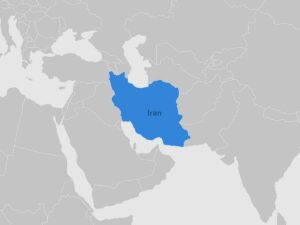
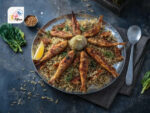
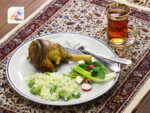
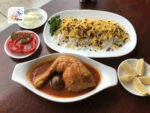
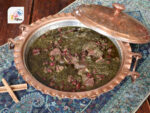
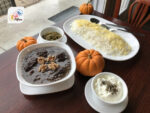
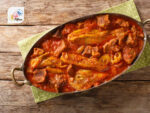
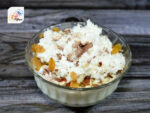
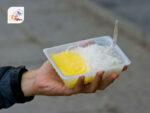
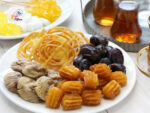
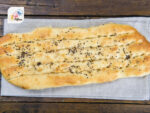
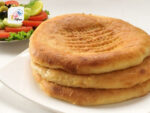
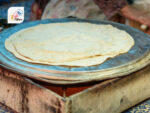
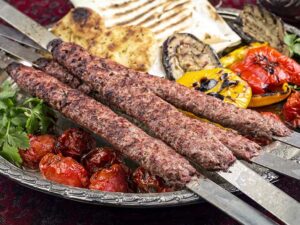
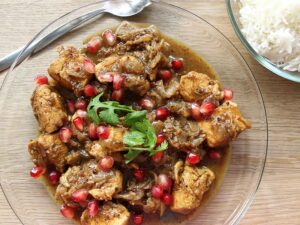
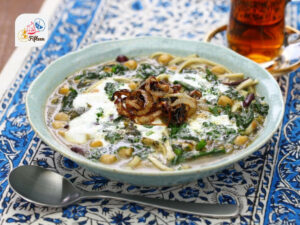
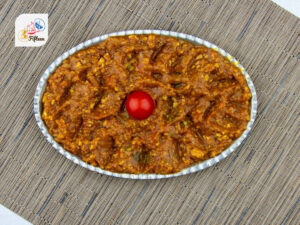
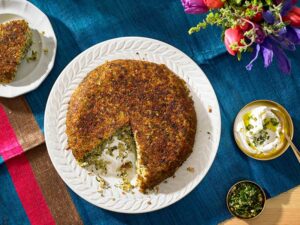
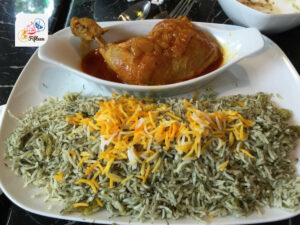
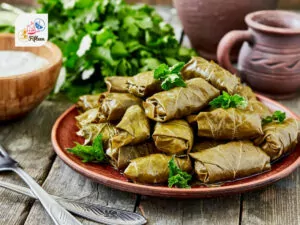
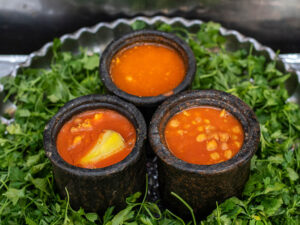
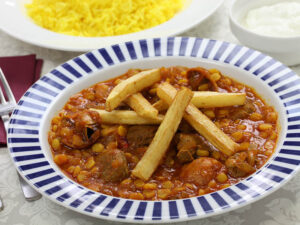
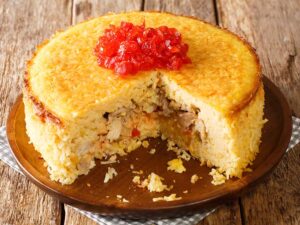
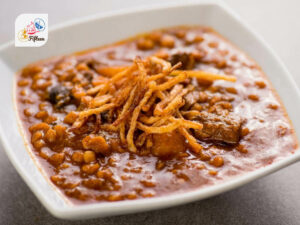
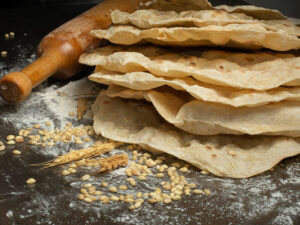
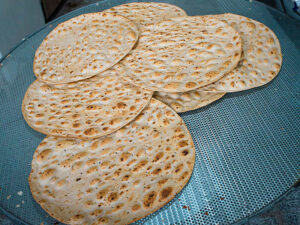
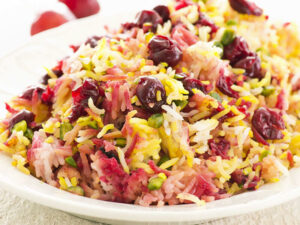
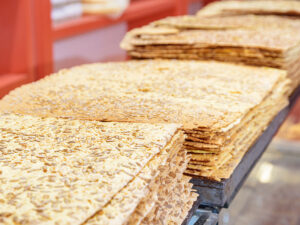
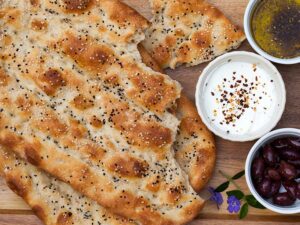
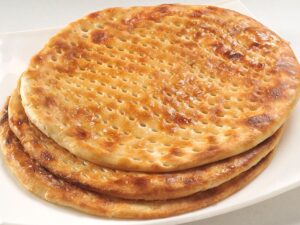
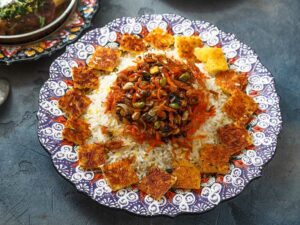
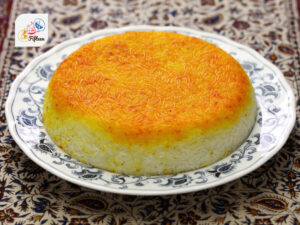
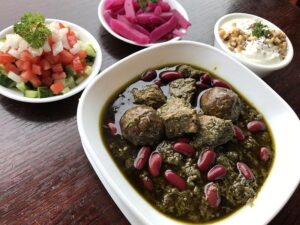
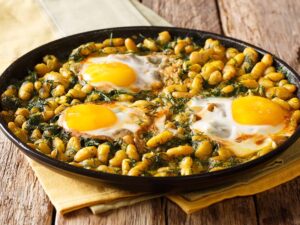
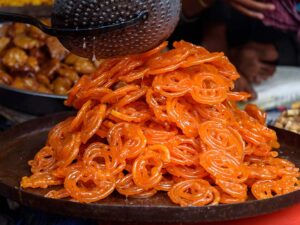
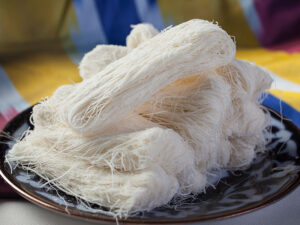
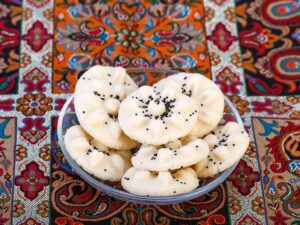
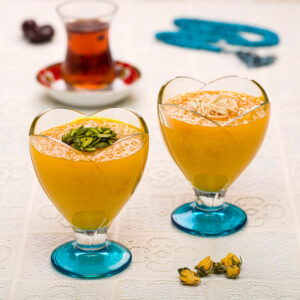
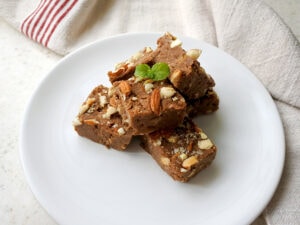
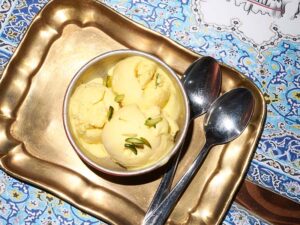
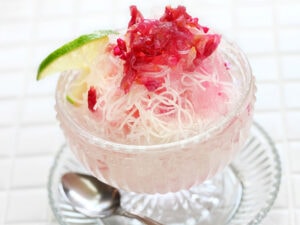
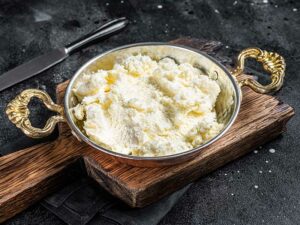
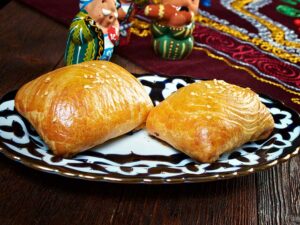
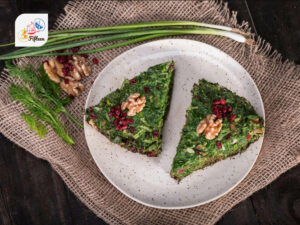
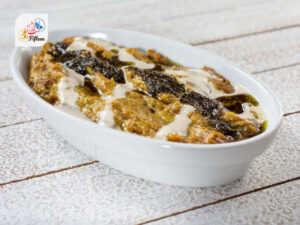
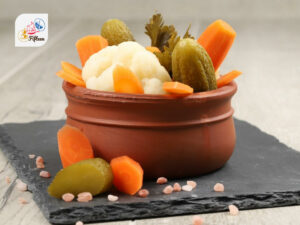
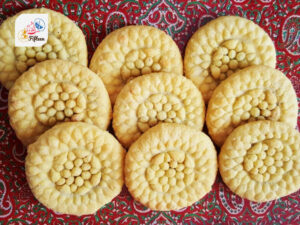
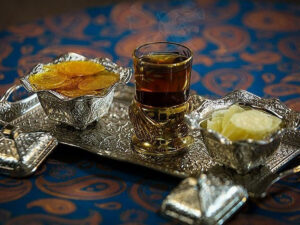
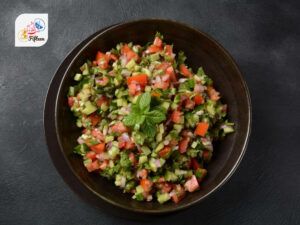
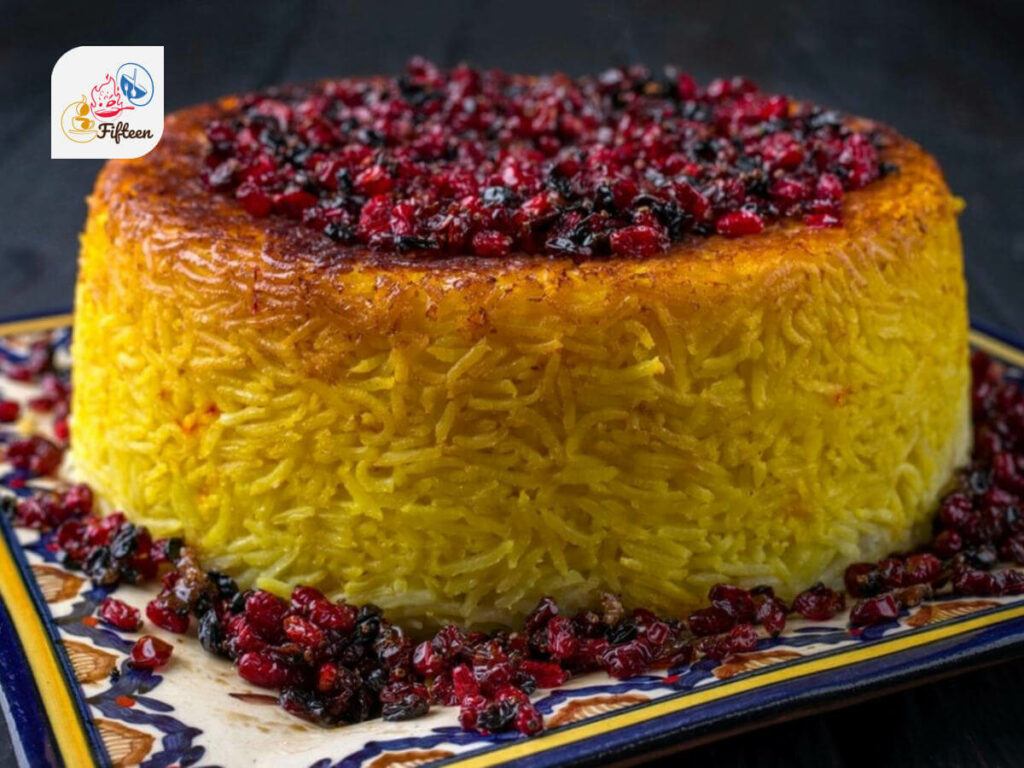
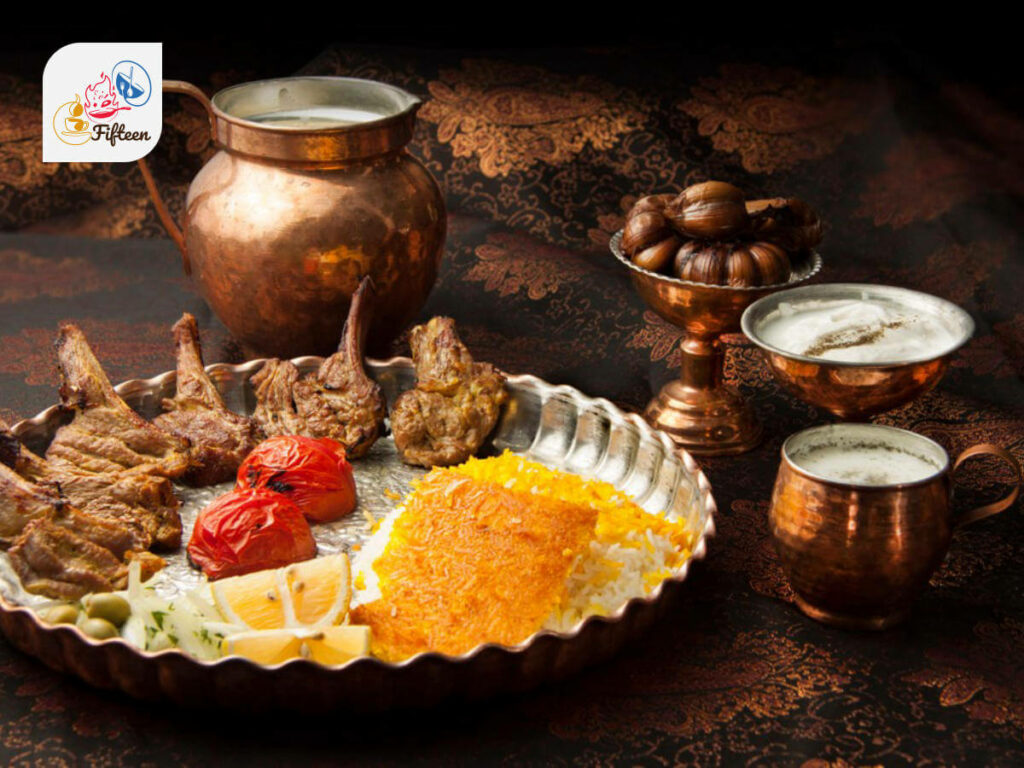
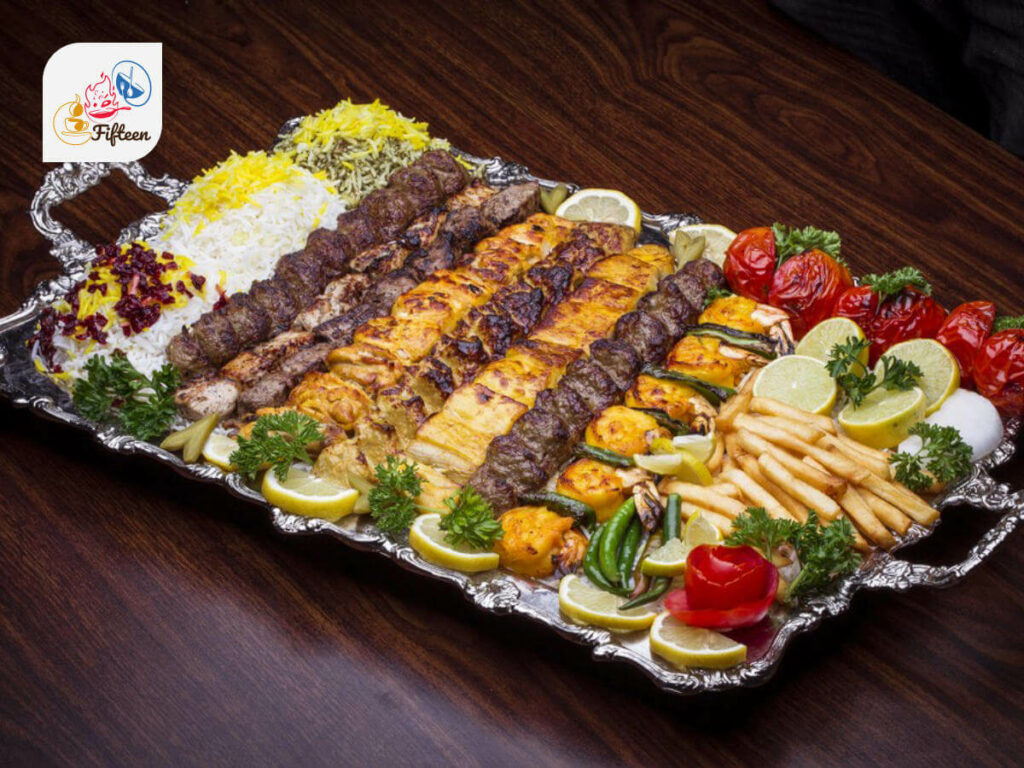
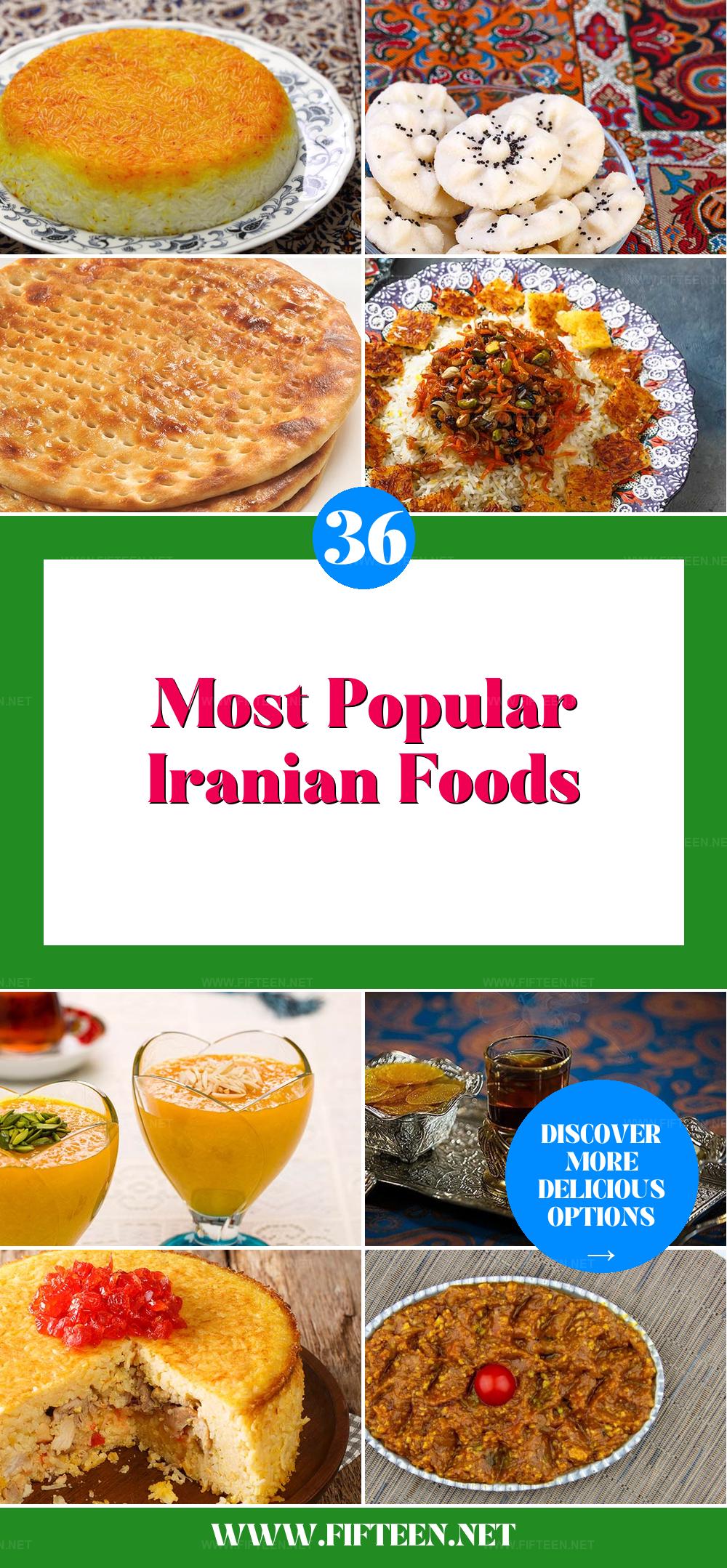
Jamie Scott
Editor in Chief, Senior Content Writer
Expertise
Home Cooking, Meal Planning, Recipe Development, Baking and Pastry, Food Editor, Cooking-video Maker, Western Food Evaluation Expert
Education
Le Cordon Bleu College of Culinary Arts
Local Community College, New York, NY
Jamie Scott is a skilled culinary expert and content creator specializing in Western cuisine. With over 15 years in the culinary field and formal training from Le Cordon Bleu, Paris, Jamie deeply understands how to blend nutrition with delicious flavors. His passion for cooking matches his commitment to making healthy eating accessible and enjoyable.
On Fifteen.net, Jamie brings a fresh perspective to classic dishes and beverages, offering readers insightful recipes, cooking tips, and a fresh view on meal planning that emphasizes taste, health, and simplicity.